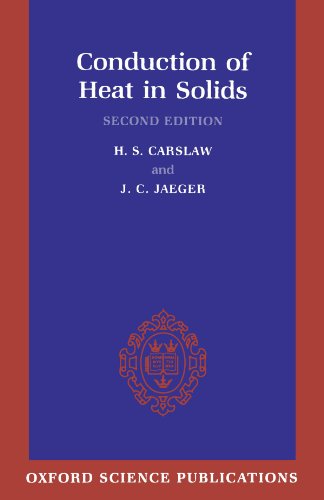Conduction of Heat in Solids epub
Par bradley marion le dimanche, octobre 25 2015, 22:52 - Lien permanent
Conduction of Heat in Solids by H. S. Carslaw, J. C. Jaeger


Download eBook
Conduction of Heat in Solids H. S. Carslaw, J. C. Jaeger ebook
Page: 517
Publisher: Oxford University Press, USA
ISBN: 0198533683, 9780198533689
Format: djvu
Houses lose a lot of heat through their windows even when they're shut. In all cases the temperature throughout is constant at t=0 The first two are. I want to be able to compare four different cases. Consider the heat conduction equation: dT/dx = K * d2T/dx2 I'm interested in the semi-infinite solid. Conduction and Convection Conduction is most important in Solids. Horatio Scott CarslawとJohn Conrad Jaegerによる共著 Conduction of Heat in Solids. Conduction is heat transfer from warm to cooler areas within a material, or between two materials touching each other. Conduction is heat transfer within solids or between contacting solids. Transfer of heat in solids is by conduction. All conduction needs molecules so that the energy can be passes along. Such bad conductors of heat are called insulators. Conduction transfers heat energy through one substance to another when they are in direct contact. Transfer of heat within a fluid is by convection. You can then apply the principles of Carlaw & Jaeger's 1947 Conduction of Heat in Solids to come up with an estimate for the cooking time. Heat energy is the result of the movement of tiny particles called atoms, molecules or ions in solids, liquids and gases. Convection and conduction are different because conduction transfers heat energy through direct contact in solids. Gases, such as air, do not conduct heat very well. Convection is heat transfer by the movement of liquids or gasses. Liquids: Most of the liquids transfer heat very well.
Op Amp Applications Handbook book download
New Aspects of Quantity Surveying Practice ebook
Petri Net theory and the modeling of systems epub